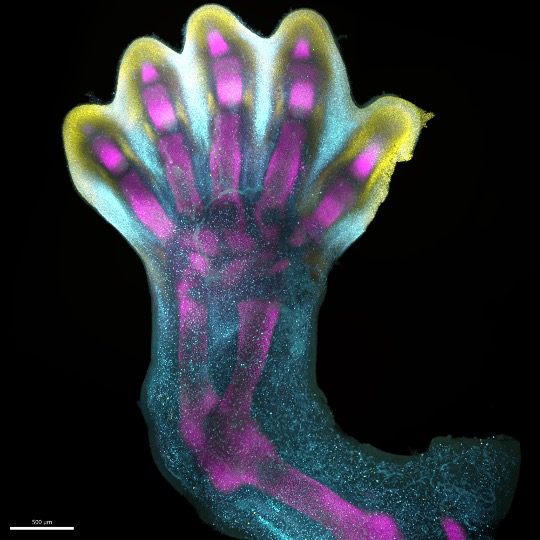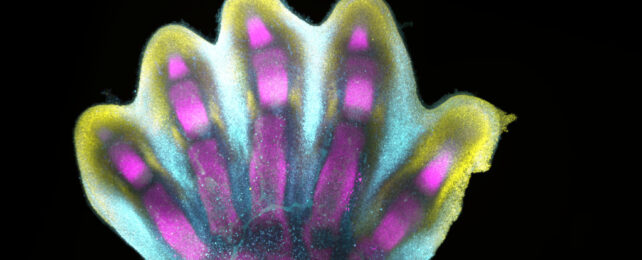Human fingers and toes don't grow outward as you might expect. Instead, our dexterous digits are 'sculpted' within a larger foundational bud.
Now the first human cell atlas of early limb development has at last revealed in exquisite detail exactly how that happens.
Prior to this, our understanding of vertebrate limb development has been largely based on model organisms, such as mice and chicken embryos, and lab-grown stem cells.
Although humans share some similarities with other vertebrates, their biology obviously diverges from ours.
The details of early limb formation have also been rendered a little fuzzy by technological limitations, now surpassed, and restrictions on the use of human embryos for research beyond 14 days, a rule that has been relaxed under strict ethical provisions.
The picture constructed so far had limbs initially emerging as shapeless limb buds protruding from the sides of the embryonic body. Eight weeks later, if all goes to plan, those pouches have transformed into anatomically distinct, recognizable limbs, complete with fingers and toes.
It's a remarkable process in early embryonic development that produces arguably one of our most defining human features: our long, slender, opposable thumbs.
In 2014, scientists described how specific molecules expressed at precise moments in embryonic development moulded the formation of fingers and toes, although those predictions were based on simulations of experimental data.
Now, an international team led by cell biologist Bao Zhang at Sun Yat-sen University in China, has colored in that process in exquisite detail, by analyzing thousands of single cells from donated embryonic tissues that were between 5 and 9 weeks of development.

"We identified 67 distinct cell clusters from 125,955 captured single cells, and spatially mapped them across four first trimester timepoints to shed new light on limb development," the team writes in their published paper.
"In doing so, we uncovered several new cell states," they add.
"What we reveal is a highly complex and precisely regulated process," says Hongbo Zhang, senior author and cell biologist from Sun Yat-sen University in China.
"It is like watching a sculptor at work, chiseling away at a block of marble to reveal a masterpiece. In this case, nature is the sculptor, and the result is the incredible complexity of our fingers and toes."
As you can see in the video below, the researchers mapped gene expression patterns to see how those genetic instructions shaped how digits formed.
From hazy beginnings, the expression of IRX1 (represented in aqua in the video below), a gene critical for digit formation, and SOX9 (represented in magenta in the video), a gene essential for skeletal development, overlap in five distinct lengths within the developing limb.
At around 7 weeks of development, programmed cell death instructions are switched on in the undifferentiated cells congregating between these lengths (associated with the expression of MSX1, represented in yellow in the video), and well-defined fingers and toes are revealed.
Like a block of marble being sculpted into a masterpiece by the expression of these genes, our fingers and toes are chiseled out from tip to base as unneeded cells recede.
Small irregularities in this process can lead to limb deformities, which 1 in 500 people are born with – making them some of the most frequently reported syndromes at birth.
The researchers also mapped the expression of genes linked with congenital conditions, such as short fingers (brachydactyly) or webbed digits (syndactyly), to get a better sense of where limb development gets off course.
"For the first time, we have been able to capture the remarkable process of limb development down to single-cell resolution in space and time," says Sarah Teichmann, senior author and computational biologist at the Wellcome Sanger Institute.
She says creating single-cell atlases is "deepening our understanding of how anatomically complex structures form, helping us uncover the genetic and cellular processes behind healthy human development, with many implications for research and healthcare."
Importantly, the researchers also showed that limb formation in humans and mice does follow similar trajectories, with some differences in activated genes and cell types.
The study has been published in Nature.
